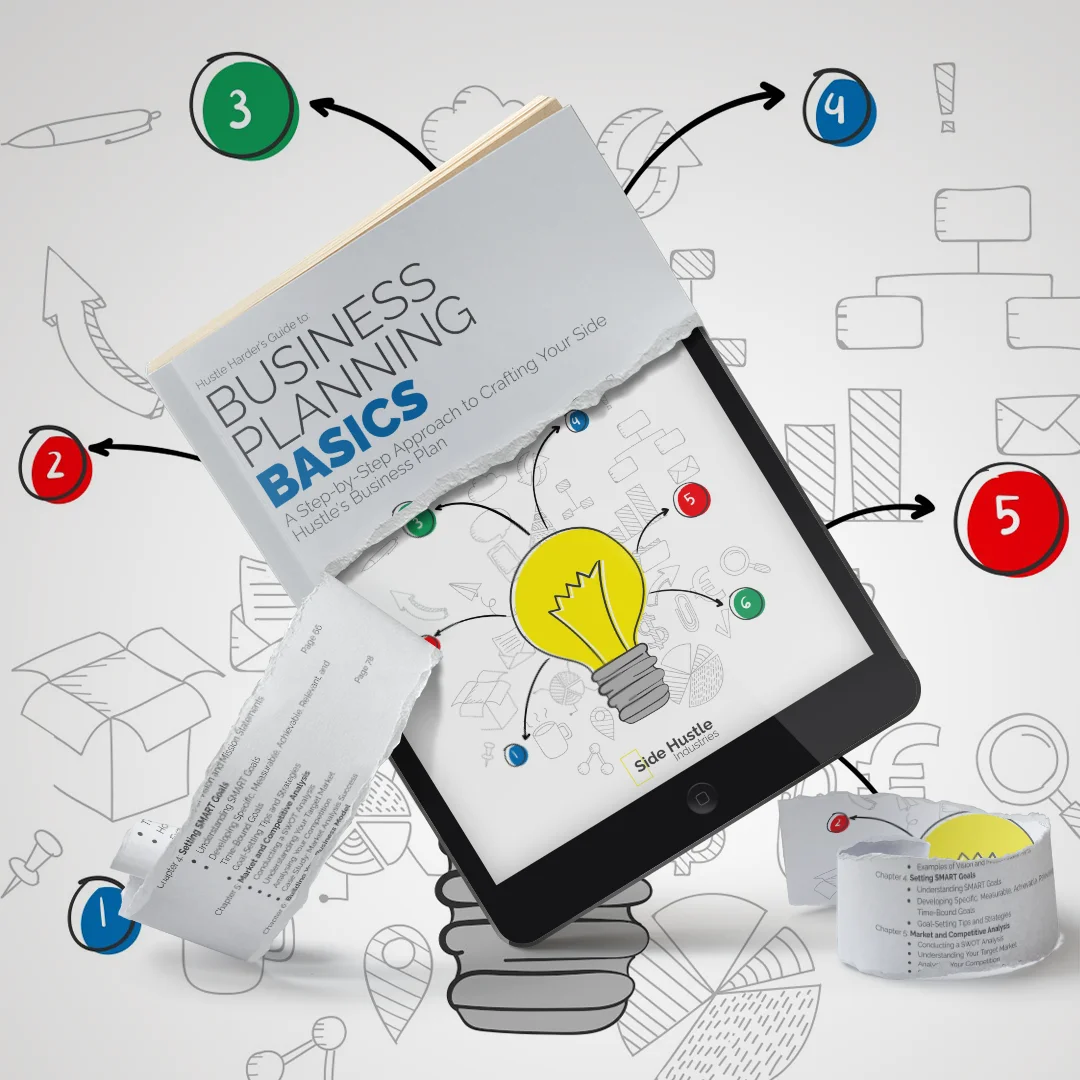
In the ever-evolving landscape of entrepreneurship, understanding your competition is as critical as comprehending your target market. Analyzing Your Competition empowers you to identify your strengths, weaknesses, opportunities, and threats relative to others in your industry. It is a crucial part of market research that informs your strategic decisions, helps you differentiate your business, and maximizes your chances of success. In this blog, we will explore the importance of competitor analysis and provide a structured guide to conducting a comprehensive assessment of your competitors.
Why Analysing Your Competition Matters
Analysing your competition is not about imitation but about gaining insights that inform your strategy. Here’s why it matters:
1. Identifying Market Gaps:
Analysing competitors can help you spot unaddressed customer needs or underserved market segments. This presents opportunities for differentiation and innovation in your products or services.
2. Strategic Positioning:
Understanding your competitors’ strengths and weaknesses enables you to strategically position your business. You can emphasise your strengths where they are weak, and mitigate your weaknesses where they are strong.
3. Pricing Strategy:
Competitor analysis helps you set competitive pricing for your products or services. By evaluating what your competitors charge, you can determine how your pricing aligns with the market.
4. Marketing and Promotion:
By studying your competitors’ marketing strategies, you can craft unique and effective marketing campaigns. It also helps in finding gaps in their strategies that you can exploit.
5. Customer Retention:
Identifying what your competitors do to retain customers can inspire you to develop customer loyalty programs and improve your customer service.
6. Innovation and Improvement:
Knowing what your competitors are doing well can push you to innovate and improve your offerings. This fosters a culture of continuous enhancement.

A Step-by-Step Guide to Analyzing Your Competition
To effectively analyse your competition, follow these steps:
1. Identify Your Key Competitors:
Begin by identifying your primary competitors. These are the businesses that directly offer similar products or services in the same market. To identify them, you can:
- Search Online: Use search engines to find businesses in your industry and locality.
- Ask Customers: Inquire with your current or potential customers about the alternatives they consider.
- Participate in Industry Events: Attend industry trade shows, conferences, or local business networking events to meet your competitors.
2. Gather Information:
Collect information about your competitors, both publicly available and through your network. Consider aspects like:
- Products and Services: What do they offer? How do their offerings differ from yours?
- Pricing: How do their prices compare to yours?
- Market Share: What portion of the market do they hold?
- Customer Base: Who are their typical customers, and what is the size of their customer base?
- Online Presence: Analyse their websites, social media profiles, and online reviews.
- Marketing Strategies: What marketing channels do they use, and what messaging do they employ?
- Customer Feedback: What are customers saying about them? What are their strengths and weaknesses, according to customer reviews?
- Location: If they have physical locations, where are they located?
- Industry Position: Are they leaders, challengers, or niche players in the industry?
3. Analyse Their Strengths and Weaknesses:
Once you’ve gathered information, evaluate the strengths and weaknesses of each competitor. Consider factors such as:
- Quality of Products or Services: Are they known for high-quality offerings?
- Pricing Strategy: How competitive are their prices, and do they offer discounts or incentives?
- Customer Service: How do they treat their customers, and how responsive are they to inquiries and issues?
- Market Share: Do they have a significant market share, and what strategies have they used to achieve this?
- Innovation: Are they known for their innovative products or services?
- Marketing and Branding: Do they have a strong online presence and branding?
- Location and Distribution: How convenient are their locations and distribution channels?
- Customer Loyalty Programs: Do they offer programs to retain customers and encourage repeat business?
- Operational Efficiency: Are they known for streamlined processes and efficiency?
4. Identify Opportunities and Threats:
Analyse your competitors’ strategies and market position to identify opportunities and threats:
- Market Gaps: Are there customer needs or market segments that competitors are not effectively addressing?
- Evolving Trends: What industry or market trends are they capitalising on, and how can you adapt to these trends?
- New Entrants: Keep an eye on potential new competitors entering the market. How would they impact your business?
- Economic Conditions: How would changes in the economy or industry impact your competitors and, in turn, your business?
- Regulations: Assess how changes in laws and regulations could affect your competitors’ operations and yours.
5. SWOT Analysis for Your Business:
After gathering information about your competitors, perform a SWOT analysis for your own business. Use the insights gained from the analysis to identify opportunities to improve and threats that need mitigation.
- Strengths: Highlight your business’s strengths and how you can leverage them.
- Weaknesses: Address areas where your business is weak and create plans to mitigate those weaknesses.
- Opportunities: Use the opportunities identified from your competitor analysis to inform your strategy.
- Threats: Develop strategies to counter the threats you have recognized through your analysis.
6. Develop Strategies:
Based on the insights from your competitor analysis, develop strategies to differentiate your business and gain a competitive edge. Consider how you can emphasise your strengths, address your weaknesses, capitalise on opportunities, and mitigate threats.
For example, if your analysis reveals that your competitors are not fully utilising social media for marketing, you might focus on building a strong online presence and engaging with customers through social platforms.

Real-Life Example: Competitor Analysis
Suppose you are planning to open a local coffee shop. Through your research, you identify two key competitors in your area: “Java Delights” and “Café Connections.”
Java Delights:
- Strengths: High-quality coffee beans, cosy ambiance, loyal customer base.
- Weaknesses: Limited food menu, no outdoor seating.
- Opportunities: Growing local customer base, potential to expand menu.
- Threats: Nearby Café Connections expanding, new coffee shop opening.
Café Connections:
- Strengths: Extensive menu, large seating area, family-friendly.
- Weaknesses: Inconsistent coffee quality, high employee turnover.
- Opportunities: Expanding to nearby locations, focusing on quality improvement.
- Threats: Java Delights’ loyal customer base, new coffee shop opening.
With this analysis, you recognize an opportunity to differentiate your coffee shop by offering high-quality coffee like Java Delights but with a broader food menu similar to Café Connections. You can also target the expanding customer base in your area and focus on creating a cosy ambiance. By identifying the threats posed by nearby competitors and new entrants, you can develop strategies to ensure your business remains competitive.
Using Competitor Analysis in Your Business
The insights gained from competitor analysis can influence various aspects of your business:
- Product or Service Differentiation: Adjust your products or services to cater to unaddressed customer needs or improve upon your competitors’ offerings.
- Pricing Strategy: Set competitive prices based on your analysis, ensuring they align with the market while providing value.
- Marketing Strategy: Craft marketing campaigns that emphasise your strengths and address your competitors’ weaknesses.
- Customer Retention: Develop customer loyalty programs and services that address the shortcomings of your competitors.
- Operational Efficiency: Improve your operational processes to surpass the efficiency of competitors.
Competitor analysis is an ongoing process. As your business evolves and the market changes, regularly revisit your analysis to adapt your strategies and maintain your competitive edge. It’s a dynamic tool that keeps your business agile and responsive to the competitive landscape.

*Also available on Amazon in Kindle, Soft Cover & Hard Cover formats. —> Click Here.
